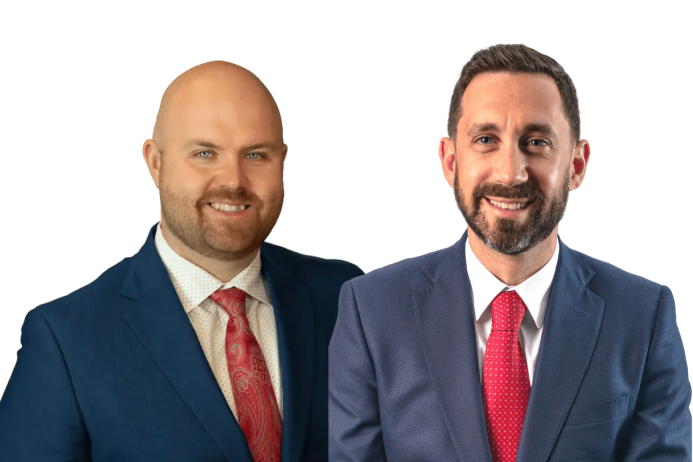There are few personal injuries that are more catastrophic than spinal cord damage. The spinal cord is literally the backbone of a person’s entire nervous system. Any spinal cord injury therefore needs to be taken seriously.
When spinal cord injuries are the result of negligence, such as a car accident or medical malpractice, victims can and should seek appropriate compensation for their losses. Our Cleveland spinal cord injury lawyers are here to help. Tittle & Perlmutter is a team of dedicated Cleveland catastrophic injury lawyers who are experienced in representing clients with these kinds of life-altering conditions. We can review your case, identify the responsible parties, and take legal action on your behalf to secure financial damages.
Understanding Spinal Cord Injuries
The spinal cord is a thick bundle of nerve fibers that runs alongside your back. In simple terms, the spinal cord is what enables your brain to communicate with the rest of your nervous system. A spinal cord injury can disrupt the transmission of these signals, which in turn can make it difficult–and in some cases impossible–for the victim to use their body normally.
Healthcare professionals classify spinal cord injuries according to location and severity. With respect to location, there are four principal areas of the spine that may be injured:
- the cervical spine, which runs from the bottom of the skill to roughly the shoulders
- the thoracic spine, which runs from the upper back to around the navel
- the lumbar spine, which runs across the lower back
- the sacral spine, which runs from the buttocks to the tailbone
Spinal cord injuries to any of these locations are considered either incomplete or complete. A complete spinal cord injury generally means there is a permanent loss of function below the site of the injury. An incomplete spinal cord injury, in contrast, means there is at least some function below the affected area. Keep in mind, spinal cord injuries often progress in multiple stages or “phases.” This means that following the initial spinal cord injury, secondary injuries can develop and cause additional damage.
Common symptoms of spinal cord injuries include pain, numbness, and reduced strength or weakness. In serious cases, particularly those involving complete spinal cord injuries, there is likely to be paralysis, which may be temporary or permanent. There can also be autonomic symptoms such as a slowing of your heart rate, low blood pressure, and even urinary incontinence.
The Common Causes of Spinal Cord Injuries
There are many factors that may cause or contribute to a spinal cord injury. With respect to the types of spinal cord injuries that we see with our clients, here are some of the more common scenarios:
- Motor Vehicle Accidents: More than one-third of all spinal cord injuries are sustained in motor vehicle accidents, according to the Cleveland Clinic. Victims who lack significant safety protections from a crash, such as motorcyclists and pedestrians, are at an especially high risk of spinal cord damage.
- Falls: Falling accidents also account for roughly one-third of spinal cord injuries. This includes slip-and-fall accidents caused by hazardous conditions on public or private property, as well as falls suffered by nursing home residents as a result of improper care.
- Violent Acts: Many spinal cord injuries are the result of intentional acts of physical violence, such as gunshot and stab wounds to the back.
Another common cause of spinal cord injuries is medical malpractice. Our Cleveland spinal cord surgery malpractice lawyers have handled many cases where a patient suffered permanent damage, including paralysis, due to a preventable medical error. Here are just a few examples:
- delayed treatment of a spinal cord injury that leads to further damage
- improper administration of epidural anesthesia
- improper chiropractic adjustments
- improperly performed spinal tap procedure
- misdiagnosis/failure to diagnose a spinal disorder
- surgical errors
What Compensation Can You Seek for a Spinal Cord Injury in Cleveland?
Through a personal injury lawsuit, the victim of a spinal cord injury may seek compensatory damages, i.e., financial compensation for their losses caused by the defendant’s negligent or intentional actions. Compensatory damages are further broken down in economic and non-economic damages.
Economic damages commonly include the full costs of the spinal cord injury victim’s medical care and rehabilitation, as well as compensation reflecting their loss of income and diminished future earning capacity.
Non-economic damages include the spinal cord injury victim’s pain and suffering, loss of enjoyment of life, and other difficult-to-quantify losses as a result of their condition. While Ohio law normally caps non-economic damages in personal injury cases, those limits do not apply when the victim suffers a catastrophic injury, such as spinal cord damage that leads to paralysis.
Speak with a Cleveland Spinal Cord Injury Attorney Today
A spinal cord injury can change your entire life in a fraction of a second. So if your injury was the result of someone else’s actions, you have the right to hold them legally and financially accountable for what they have done. If you need to speak with a qualified Cleveland spinal cord injury lawyer, call Tittle & Perlmuter today at 216-222-2222 to schedule a free case strategy session.


